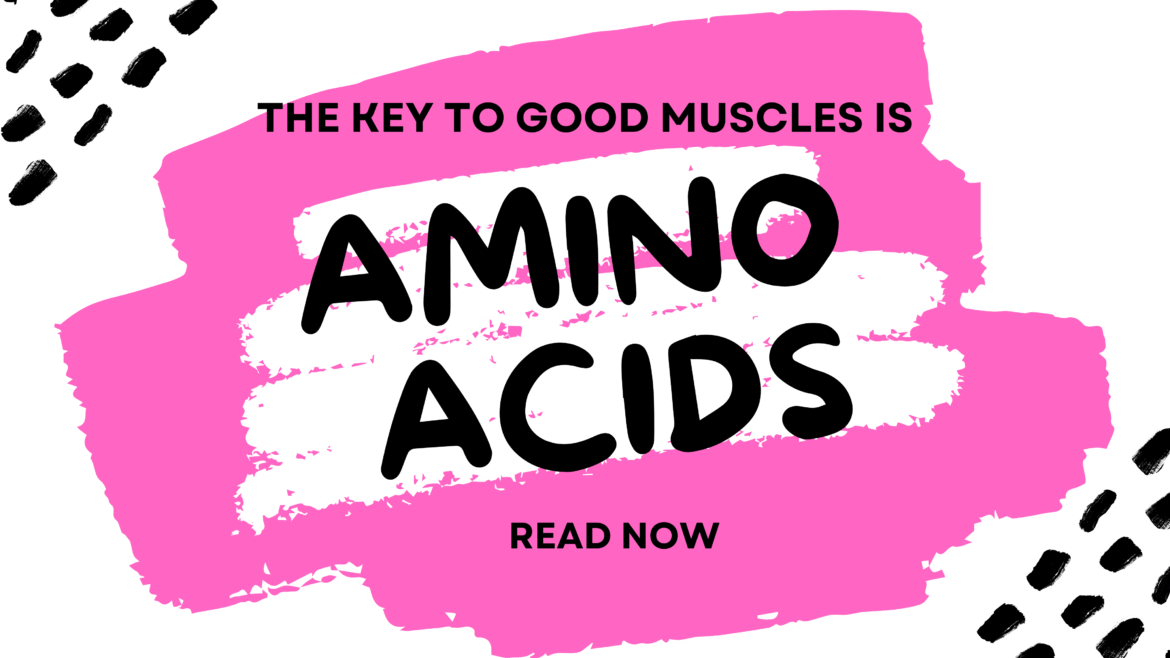When it comes to bodybuilding and sculpting a toned body, most people think of protein shakes, heavy lifts, and sweat. But one of the unsung heroes in fitness nutrition is amino acids. These are the building blocks of proteins, and supplementing with them—when done correctly—can push your progress forward in powerful ways.
Here’s a breakdown of what amino acids are, how they help, when they’re most effective, and important cautions. By the end, you’ll see why using a high-dose product like the one below might make sense in your regimen.
What Are Amino Acids & Why They Matter
- Amino acids are the molecules used by the body to build proteins. There are 20 standard amino acids, nine of which are “essential”—meaning the body cannot synthesize them, so you must get them from your diet.
- Among these, the branched-chain amino acids (BCAAs: leucine, isoleucine, valine) are particularly important for muscle: leucine especially activates the molecular signals that trigger muscle protein synthesis. (So getting enough essential amino acids is critical—whether from food (meat, dairy, legumes, etc.) or supplements.
How Supplementing Helps Build Muscle & Get Toned
Here are the main ways amino acid supplements can assist your fitness goals:
- Boosting Muscle Protein Synthesis (MPS)
After resistance training, your muscles need the right “raw materials” to repair and grow. Amino acids—especially essential ones—provide those building blocks. Leucine is a key trigger. Studies show supplements with EAAs or BCAAs speed up MPS compared to placebo. - Reducing Muscle Breakdown (Catabolism)
When you train hard or when you’re in a calorie deficit (cutting), your body tends to break down muscle. Amino acid supplements help by providing what your body would otherwise pull from muscle tissue. This helps preserve lean mass. - Speeding Recovery & Reducing Soreness
One of the biggest friction points in building muscle is delayed onset muscle soreness (DOMS), and the resulting downtime. Research suggests BCAAs/EAA supplementation can reduce muscle damage, inflammation, and soreness, helping you bounce back quicker between workouts. - Enhancing Performance & Endurance
Some amino acids (especially BCAAs) can help reduce fatigue during workouts by influencing how the brain perceives effort, and by helping conserve glycogen (your stored energy), which lets you train harder or longer. - Supporting Fat Loss & Lean Body Composition
When your amino acid intake is adequate, especially in the form of EAAs/BCAAs, your body is better able to maintain muscle mass during periods of dieting or calorie restriction. The more muscle you preserve, the higher your basal metabolic rate (BMR), meaning you burn more calories even when at rest. This supports a lean, toned look.
When & How Much to Take
- Timing: Amino acid supplements are most effective when taken around workouts—before, during, or after—as this is when muscle damage and protein breakdown are highest. Some studies suggest taking them both pre- and post-training helps maximize muscle protein synthesis.
- Dosage: The effective dose depends on which amino acid(s) you’re using. For BCAAs, many studies use several grams (for instance, 5-10 g of BCAAs per dose). For full essential amino acid blends, higher doses may be needed. Also, your total protein intake from diet counts. If your diet is already rich in high quality protein, supplements are more of an assist.
- Quality: Choose a supplement from a reputable brand; check for third-party testing for purity and accurate labeling. This ensures safety and that you’re getting what’s advertised.
Things to Watch Out For & Who Needs to Be Cautious
- If your diet already provides enough complete protein (animal or well-planned plant sources), the extra benefit from supplements may be modest.
- There are risks if intake is excessive—digestive discomfort, possible kidney/liver stress if you already have underlying issues. Always consider medical advice if you have health conditions.
- Supplements are not regulated like medicines in many countries, so look for products with certifications.
Putting It All Together in a Toning Plan
To get a toned, muscular physique, here’s how you might integrate amino acids:
- Ensure your diet gives enough total protein (often in the range of ~1.6-2.2 g per kg of body weight, depending on your training level).
- Use amino acid supplements on training days: before or during the session (for endurance and anti-catabolic benefits), and/or post workout (for recovery and repair).
- Combine with progressive resistance training and enough rest/sleep. Without training stimulus, amino acids alone won’t build new muscle.
- When cutting calories, keep up amino acid / protein intake to preserve muscle mass.
If you want an example of a product, here’s one with a high amino acid dose: Amino Acid 1800 mg
Conclusion: Amino acid supplements are not magic, but when used smartly—and especially when your diet or training creates extra demand—they can help speed muscle growth, preserve lean body mass, shorten recovery, reduce soreness, and contribute to a more toned physique. As with all supplements, they’re most effective when paired with good training, nutrition, and recovery
